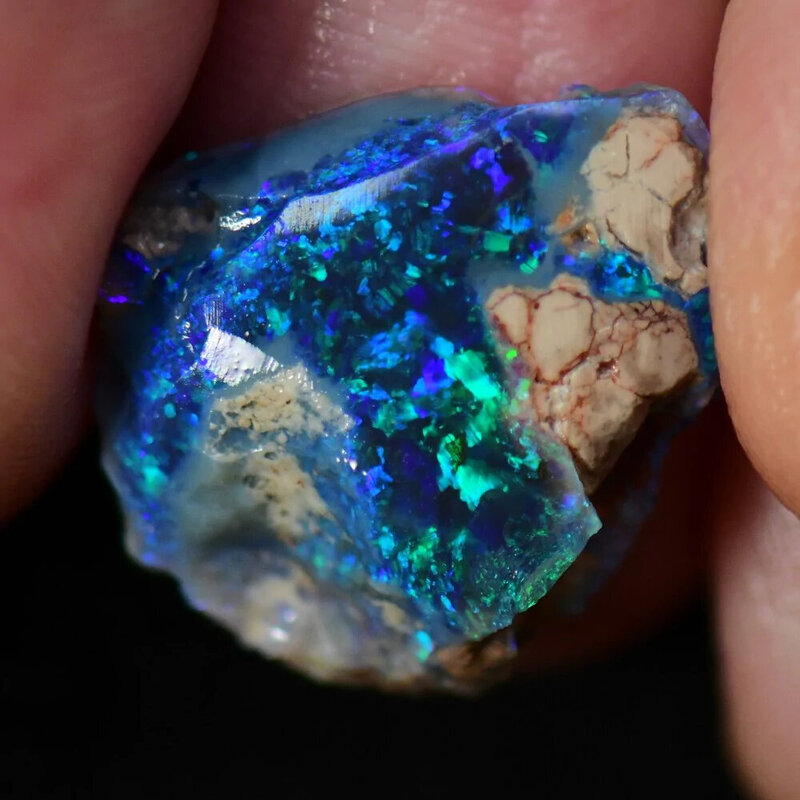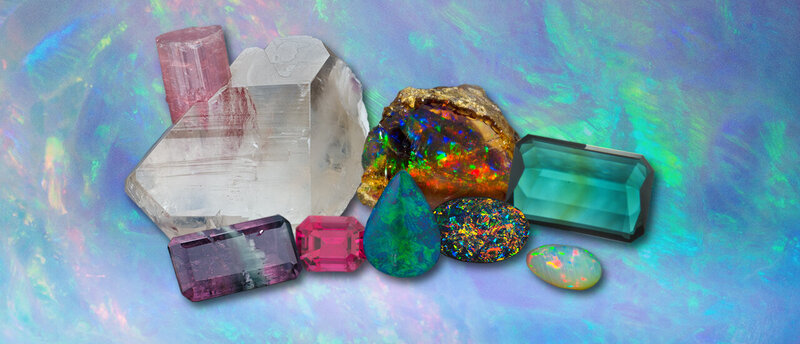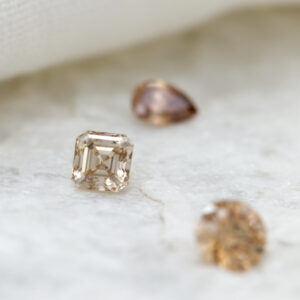Those born in October get to enjoy a choice of birthstone. Opals have traditionally been the birthstone for this month, but recently Tourmalines have been added meaning October babies get a spectacular colour range of gemstones to choose from. We’re going to explore a little of both in this article.
Opals
In Sanskrit, these are “upala”, a “precious stone”. In ancient Rome, these were “opalus” and in ancient Greek “opallios” meaning, “to see a change in colour”. Opals are valued for their rainbow of shifting colours and poetic writers would compare them to fireworks, volcanoes, galaxies and vibrant paintings. Nomadic Arabian tribes believed they held lightning and would fall from the sky during thunderstorms. Ancient Romans called opals the “cupid stone”, believing them to be the most precious and powerful gem and a symbol of love, while ancient Greeks thought they gave
the gift of prophecy and protection from disease.
Opals are formed when water carrying silica deposits finds its way underground between layers of rock. When the water evaporates, the solid silica is left behind, forming the opal. Sometimes, silica seeps into spaces around wood, seashells or skeletons, resulting in opalized fossils. Various impurities within the stone cause the different colours. Yellows and reds indicate iron oxide, milky or pearly opals indicate tiny gas bubbles, and black opals that flash green, blue or red indicate magnesium oxide and organic carbon. Opals are found in many places, including Ethiopia, Mexico, Brazil and most famously, Australia.

Opals can contain up to 20% water. Because of this, they are considered a more delicate stone, rating a 5-6.5 on the Mohs scale. They are more susceptible to scratching so are more suited to special occasions rather than everyday wear. They should only be cleaned with warm, soapy water as other methods can damage the stone. However, the versatility and beauty of opals makes them worthy of the extra care.
Tourmalines
The name Tourmaline comes from the Sinhalese (Sri Lankan) word “toramalli” meaning “stone of mixed colours”. Few gems come in the dazzling array of colours that tourmalines do, and because of this, throughout history they were often mistaken for other gemstones. One of the “rubies” in the Russian crown jewels is actually red tourmaline. A Spanish conquistador found green tourmaline in Brazil and thought it was emerald. They wouldn’t be recognized as a distinct mineral species until the 1800s.
Ancient Egyptians believed that the range of colours was caused by the gem passing over a rainbow on its journey from the centre of the earth. In reality, trace elements of metal within the boron silicate crystal structure cause the variations. Iron produces black or deep brown colours, or if titanium is also present, purplish blue or bluish green. Magnesium causes brown or yellow, manganese causes red or pink, and chrome and vanadium cause green. A recent discovery in Paraíba, Brazil found vivid purplish or greenish blue tourmaline caused by the presence of copper. Some crystals can even have multicoloured properties, an example being watermelon tourmaline which transitions from green outer edges, through transparent white to a pink interior. Tourmaline is commonly mined in Brazil, throughout African and South Asian countries and some parts of the US.

A unique characteristic of tourmalines is that it can become electrically charged (static electricity) through heat or pressure. When charged, it can act as a magnet, attracting or repelling dust particles. Museum exhibits of tourmaline require frequent cleaning because the heat from the display lights can charge the stones, attracting dust.
Tourmaline is a fairly recent discovery compared to other gemstones and somewhat lacks the rich history and lore that many other gems have. However different colours are thought to have their own healing properties – black is believed to bring confidence and protection, pink is associated with compassion, gentleness and love, and green promotes courage, strength and stamina. They rank a 7-7.5 on the Mohs scale so are a good choice for everyday wear. As with most gems, warm soapy water is best for cleaning.
We can source opals and tourmalines in a range of colours and sizes, to suit any budget. Get in touch with us here to get started.





